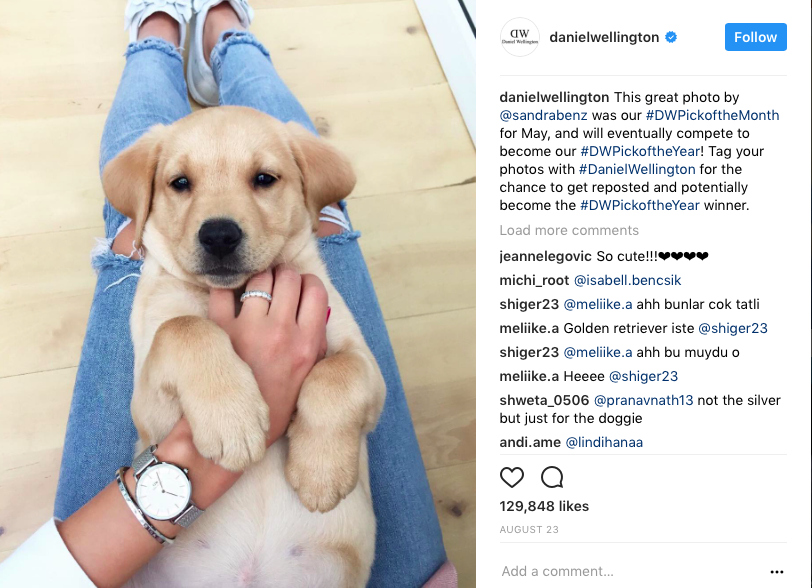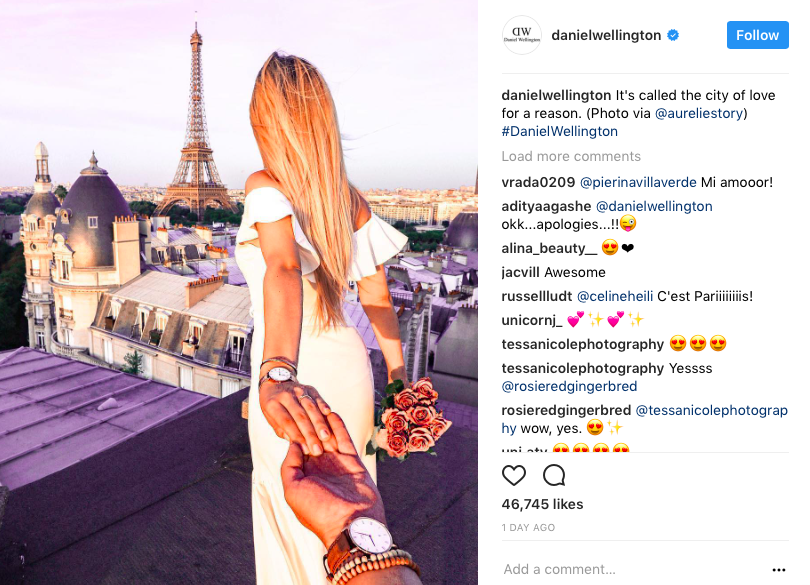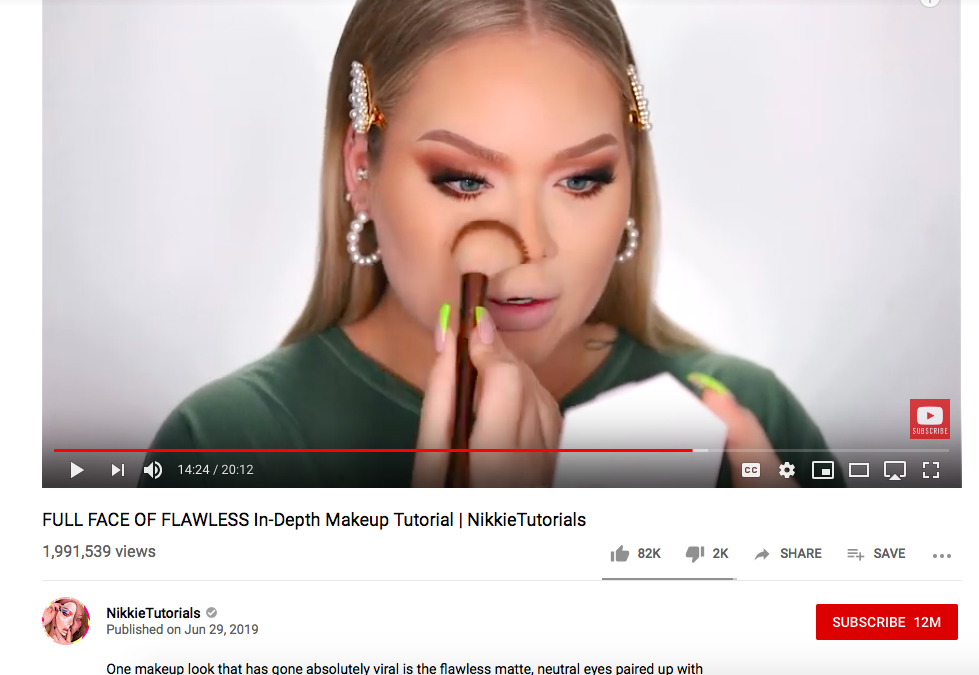How much does influencer marketing cost?
It is of the utmost importance that both brands and influencers know and understand the cost of social media. The cost of influencer marketing is predicated on the partnership between brands and influencers. This means how much the influencers charge to work with brands, and how much brands are willing to pay for the influencer partnerships, respectively.
In fact, pricing and cost are one of the problems that most brands and influencers encounter when entering the influencer industry. Influencers can charge anything from a few thousand per post up to several million, and the great spread across influencer variation does not make things easier.
During my years in the industry I have learned a few things when it comes to the factors that affect the price of marketing on social media, and today I am going to share some of our best tips. In addition, we will take a look at what different platforms cost and partnering with different influencers.
So let’s get straight to the point and take a closer look at what influencer marketing should cost.
How does pricing work in influencer marketing?
(How do influencers set their prices)
As you probably suspect, there are a lot of different factors that affect how much an influencer charge for a single promotional post.
Firstly, different social media platforms all cost differently. In other words, no social media platform is the same. Furthermore, working with influencers in different categories also affects the pricing, depending on supply and demand.
In addition, different kinds of content cost differently, so what type of content you want the influencer to create, and thus what kind of campaign you want to run affects the cost of it.
For example, long-term cooperation that extends over a couple of weeks or months often costs less per post than an individual post costs.

In addition, there are traditionally two different ways for influencers to charge their prices. Originally, when social media influencer marketing was quite new, brands paid influencers only based on the number of followers they had and thus on their potential reach.
Lately, it has become increasingly common for brands to pay based on an influencer’s engagement, because brands have understood that it’s not the number of followers that determine the success of a campaign. It’s about how engaged and loyal the followers are. Therefore, things like ROI and engagement have become more important, and as more brands have started looking at these metrics, micro-influencers have become increasingly popular among brands in their influencer marketing campaigns.

For example:
A couple of years ago, there was an “industry standard” in the US where brands paid about $ 1,000 per 100,000 followers with the possibility to negotiate. This was the general pricing format that influencers used.
In connection with the development of the industry, pricing has also begun to vary more as both influencers themselves and the companies are looking at far more factors than the number of followers. An influencer with, for example, a strong brand, high engagement, high national reach or previous good conversion data, you can expect to charge considerably more than the above metrics.
Pay for influencer marketing
As you can see above, it has become more and more complicated for influencers to set their prices. In fact, today it is more of an art form than science to find the right price.
This means that when you are going to start your influencer marketing campaigns and start looking for influencers to partner with, you need to be well prepared and know what you are looking for in order to avoid paying too much for your influencer partnerships. Know exactly what you are looking for and know what you expect regarding ROI, engagement, clicks, etc.

I also advise you to choose one of the two following pricing systems to make it easier for yourself.
1. Pay based on number of followers
If you are going to work with large influencers and industry leaders who have hundreds of thousands of followers, you’ll find that most of these influencers mainly set their prices based on their follower count.
The advantage of this is that experienced influencers already know how much they are worth and what they charge for different kinds of brand partnerships. In other words, influencers set the price and your task is to try to negotiate.
If you have a product that is only available in one or a few markets then be very careful about what the CPM price will be if you factor in the national range of the influencer. You do not want to pay large sums for irrelevant followers, so please ask for demographic data from the influencer if it is about major investments. Always, always, always, make sure that the followers of the influencer are relevant to your company before working with them. Otherwise, you may reach a lot of people through your campaign, but these people won’t be relevant to your brand.
2. Pay based on engagement
Alternatively, you can pay based on engagement which is a little trickier and often used among smaller influencers with fewer followers.
If you are going to pay an influencer based on their engagement, you need to examine several factors. For example, you need to look at how high their “engagement rate” is. It is not always the case that high engagement = good results, but those with a high level of engagement clearly have more active followers and a strong influence on these. So ultimately, when the followers are more engaged, they tend to look up to and listen to the influencer much more.

A tip is also to go through the number of comments and not just likes, as comments are often an even better indication that the followers are engaged. Be sure to check that the comments that exist are genuine and not fake. However, take into account that different categories differ in average commitment. Many people in interior design can, for example, have a fairly low engagement but perform well, while fashion influencers with young followers often have high involvement but do not drive as much conversion in the end.
As with more traditional online marketing, you will also need to predict what you think CPM (cost per thousand impressions) should be. CPC or cost-per-click is another way of paying for collaborations, though most influencers prefer to set the price first because their work is equal in performance.
Content affects the price
In addition to the rather obvious factors I mentioned above, the level of content you want the influencer to create also has an impact on the price. This is, of course, due to how much the influencer in question needs to work for a post. An influencer is an entire production team in one and stands for the creative idea, styling, photo or filming, editing, copy and then finally exposure and launching.

In other words, it will cost you to hire influencers because they do a job for you – and they are professionals at what they do and know what works for their followers’ target group – your target group. Yet still, some brands only want the influencers to work for free, but considering that they perform real work, much more than simply sharing a photo on social media, it is a lot to ask.
The biggest difference between traditional marketing and influencer marketing is the expertise of influencers and the targeted and specific nature of their followers, which, in the end, is what you pay for.
In other words, I recommend that you let influencers create their content based on your wishes and guidelines, but without a lot of rules that limit their creative freedom. They know their audience the best, and they know what they will resonate best with to ultimately generate the best results. And that expertise is part of what you pay for.
The price difference for different platforms
As mentioned, the social media platform that you run your campaigns on also plays a central part in pricing so let’s have a look at it.
There is no doubt that Instagram is the most popular platform for influencer marketing. In addition, the platform has a slightly more complicated pricing system.
As mentioned, you can as a brand either pay based on the number of followers or engagement level, but most often is a combination of the two where you also take demographics into consideration.
According to recent figures, the international average for medium-sized influencers is $ 300 ($ 3,000) per post, do note, though it’s a very general figure.
Based on the latest figures, the average price of influencers on Instagram is about the following:
- 150 USD to 350 USD: 2000 to 10000 followers.
- 350 to 30000 USD: 10000 to 500000 followers.
When you look at the above estimate in pricing, however, keep in mind that influencers who are unique and distinguish themselves in one way or another, for example, are tv personalities or have a high national range or strong brand can often land higher in price. Influencers with hundreds of thousands of followers pay a lot more and for influencers with millions of followers, there is no limit to how much a post can cost.
There are many examples of massive influencers (think of the Kardashian clan, Selena Gomez, Ariana Grande) who charge several hundred thousand for a post.
YouTube
Compared to Instagram, YouTube usually costs more per post. In fact, YouTube is one of the most expensive platforms, but this is because influencers are expected to put more effort into planning, recording and editing videos to promote your products.

Like Instagram, influencers can charge in two different ways on YouTube. Either based on the number of subscribers they have or based on the number of views the video receives. In many cases, you are expected to pay a combination of the two.
The average for a sponsored video on YouTube in 2019 is:
- 200 USD per 1000 subscribers
- 50 USD to 1000 per 1000 views
Please note: these numbers are average and the prices for YouTube posts vary widely.
Blog Posts
Blog posts are still one of the most popular channels for those who want to market their business using influencers.
If you want to order a blog post, you should expect to pay for a combination of the influencer’s monthly visitors and page views as well as the length of the post.
In addition, it costs more if you expect an SEO-optimized keyword phrase.
Today, most serious bloggers have a media kit on their site where they clearly clarify how many posts costs.
According to Later.com, 66% of US companies pay on average less than $ 250 per post. At the same time, 27% pay between $ 250 and $ 1,000 per post.
As you can see, it is a fairly low price which can be surprising at first, but there is a good explanation.
The reason for the relatively low average price has to do with the increased interest in micro-influencers. This has resulted in brands today paying less per post and instead, getting content from several influencers at the same time. Therefore, the final price per campaign often lands at similar levels as before, but it is spread across a larger number of influencers.
The United States is home to the world’s largest and most expensive influencers. According to CNBC magazine, Kylie Jenner was the most expensive influencer in 2018 with an average price of $ 1 million per post. Kylie was closely followed by Selena Gomez who charges $ 800,000 per post.
In third place, we find Cristiano Ronaldo which is not only the most expensive in Europe but also one of the few male influencers in this class. In 2018, an Instagram post with Ronaldo cost an average of $ 700,000.
Worth noting is that Cristiano Ronaldo has ongoing collaborations with sponsors and that he usually gets paid for long collaborations and not individual posts, which means that his situation is different from other influencers.
Let me summarize
By now, it should be evident that the cost of influencer marketing is a complicated subject without a clear answer. Much of the complexity is based on the many factors that affect prices but also the different platforms. The fact is that if you want to know how much an influencer charges for a social media post and marketing campaign, the best is to ask.
Because of that, it is important that you have a plan for each campaign you want to start and that you have an open dialogue with your influencers so that you can agree on a price you are both satisfied with.
And don’t forget that the cost of influencers is an investment just like any other marketing, which in the end often gives incredibly good results both directly and in the long run.


